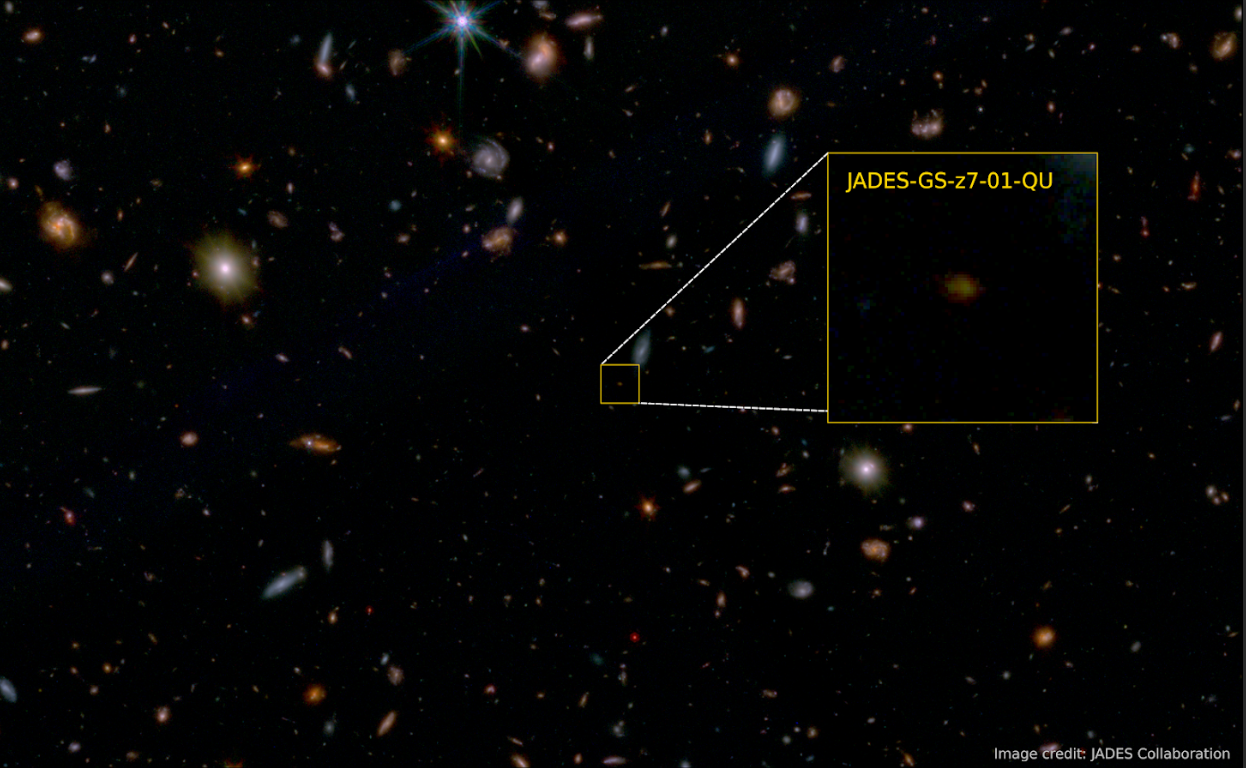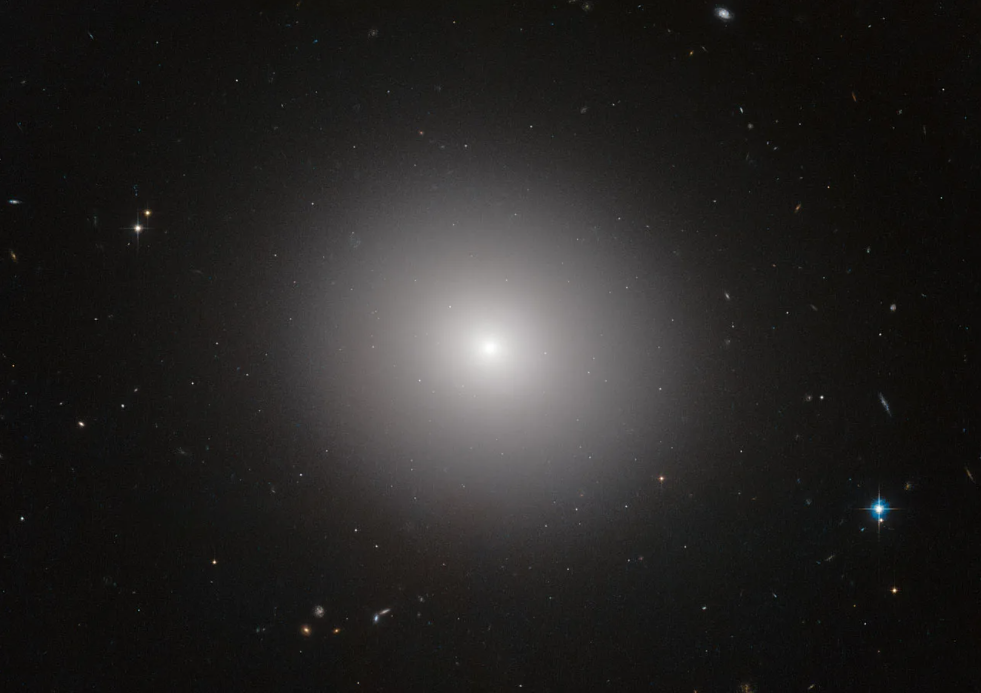
Galaxies form stars from their clouds of dust and gas. But a galaxy spotted by the James Webb Space Telescope (JWST) hasn’t formed any stars for 13 billion years.
The galaxy, called JADES-GS-z7-01-QU, and its quiet behavior was described in a study posted last year as a preprint on arXiv and then published March 6 in Nature.
“Everything seems to happen faster and more dramatically in the early universe, and that might include galaxies moving from a star-forming phase to dormant or quenched,” said Tobias Looser, a researcher at the Kavli Institute for Cosmology at the University of Cambridge and the study’s first author, in a press release.
Star formation
The galaxy’s name is derived from the JWST Advanced Deep Galactic Survey (JADES), the project that observed it.
Members of the team found that the galaxy most likely had a quick burst of star formation that lasted between 30 million to 90 million years. But it seems to have stopped developing stars just 10 million to 20 million years earlier than the snapshot in time in which we observe it. Its light has taken over 13 billion years to reach us, so JWST sees it as it existed just 700 million years after the Big Bang, making it the oldest “dead” galaxy yet found.
A galaxy can stop forming stars when its central supermassive black hole pushes away the interstellar reservoir of dust from which it create new stars. A galaxy can also use up its dusty resources by forming stars too quickly, accidentally starve itself, and cut off all new star formation. The team is not sure if what they observed with JWST was caused by either of these scenarios. But observing older galaxies helps astronomers piece together how galaxies evolve and how stars form, and use the data to create more accurate models.
Dead galaxies

Galaxies that appear to have suddenly stopped forming new stars are not new to astronomers. In fact, by the time the universe was 3 billion years old, about half of its massive galaxies had stopped its star formation. And observations from the Hubble Space Telescope and ESO’s Very Large Telescope indicate that in dead galaxies, star formation stops at its core and fizzles from the inside out — galaxies like the elliptical galaxy IC 2006 only form stars on their fringes edges of their disk.
So why do galaxies forced to shut down their star factories? It may be because something is preventing gas from flowing into the galaxies to replenish it, per a study in Nature from 2021. It may also be that collisions and mergers of galaxies play a role. A study in the Astrophysical Journal Letters found that in galaxies that merged, their gas was heated or stripped to the point where it couldn’t form star nurseries after an initial burst. (Hot gas can’t easily form stars as it won’t collapse as readily as cold gas.)
The JADES team hopes to provide some clarity. “We’re looking for other galaxies like this one in the early universe, which will help us place some constraints on how and why galaxies stop forming new stars,” said Francesco D’Eugenio, study co-author and researcher at the Kavli Institute for Cosmology, in a statement. “It could be the case that galaxies in the early universe ‘die’ and then burst back to life — we’ll need more observations to help us figure that out.”









